 As you have probably noticed, I own more than a couple of bicycles at this point. I have also sold a fewand may be paring down further before the summer's end. Most of the bicycles I've owned have gone through a variety of experimental alterations - some minor, others major; some successful and others not so much. So, what is the point of it all? Were some of these bicycles "mistakes" that I should not have gotten in the first place? And are my various projects ultimately wastes of time and money if I end up selling the bicycle in the end?
As you have probably noticed, I own more than a couple of bicycles at this point. I have also sold a fewand may be paring down further before the summer's end. Most of the bicycles I've owned have gone through a variety of experimental alterations - some minor, others major; some successful and others not so much. So, what is the point of it all? Were some of these bicycles "mistakes" that I should not have gotten in the first place? And are my various projects ultimately wastes of time and money if I end up selling the bicycle in the end?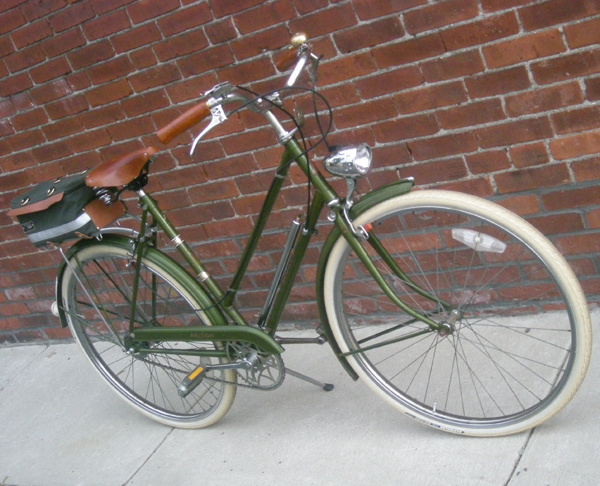 Bicycle ownership for me has two purposes. First and foremost, it is utilitarian: Ideally, I want to own several bicycles, each of which will excel at a designated function - such as commuting or cyclotouring. But I also enjoy learning about different kinds of bicycles. This includes understanding bicycle history, geometry, positioning, and the differences between manufacturing styles. And I would argue that this kind of knowledge can only truly be gainedthrough owning and riding a variety of bicycles; just reading and chatting about it is not sufficient. For me, bicycle ownership has been educational, and no bicycle I have acquired and subsequently let go of has been a "mistake": They have each helped me understand something crucial.
Bicycle ownership for me has two purposes. First and foremost, it is utilitarian: Ideally, I want to own several bicycles, each of which will excel at a designated function - such as commuting or cyclotouring. But I also enjoy learning about different kinds of bicycles. This includes understanding bicycle history, geometry, positioning, and the differences between manufacturing styles. And I would argue that this kind of knowledge can only truly be gainedthrough owning and riding a variety of bicycles; just reading and chatting about it is not sufficient. For me, bicycle ownership has been educational, and no bicycle I have acquired and subsequently let go of has been a "mistake": They have each helped me understand something crucial. Some things I have learned through my experiences:
Some things I have learned through my experiences:. the relationship between bicycle geometry and bicycle handling
. how to adjust my position for maximum comfort on different kinds of bikes
. which components work best for me, and why
. what is really my optimal bicycle size
. how to maximise a bicycle's strengths andcompensate for a bicycle's shortcomings
. how to determine whether my cycling limitations are due to lack of skill or to discomfort
. and, of course, how to perform a variety of DIY adjustments
 Though there have been frustrations, there have also been great rewards. The Pashley Princess was a dear fried whose beauty inspired me, and thanks to whose stability and reliability I immediately became comfortable with vehicular cycling. The Raleigh Lady's Sportstaught me all about vintage English 3-speeds, plunged me into anobsession with cream tires,and, ultimately, made me realise that I prefer loop frames to straight step-through frames. And the Mercier mixte helped me understand derailleur gearing by allowing me to boldly experiment with drivetrain conversion, as well as to experience an authentic French city bicycle from a bygone era.
Though there have been frustrations, there have also been great rewards. The Pashley Princess was a dear fried whose beauty inspired me, and thanks to whose stability and reliability I immediately became comfortable with vehicular cycling. The Raleigh Lady's Sportstaught me all about vintage English 3-speeds, plunged me into anobsession with cream tires,and, ultimately, made me realise that I prefer loop frames to straight step-through frames. And the Mercier mixte helped me understand derailleur gearing by allowing me to boldly experiment with drivetrain conversion, as well as to experience an authentic French city bicycle from a bygone era.I do not see myself as a collector of bicycles, but I am happy to serve as foster parent to a few that will ultimately be passed along to another owner - learning all I can from it in the meanwhile. As for the financial costs of the purchases and the alterations - I have been lucky to more or less break even,and that is good enough for me. I have also been lucky to get lots of advice and help from experienced bicycle lovers not only locally, but from all over the world. Thank you all, and I hope that some of my experiences have provided useful or entertaining information for my readers.
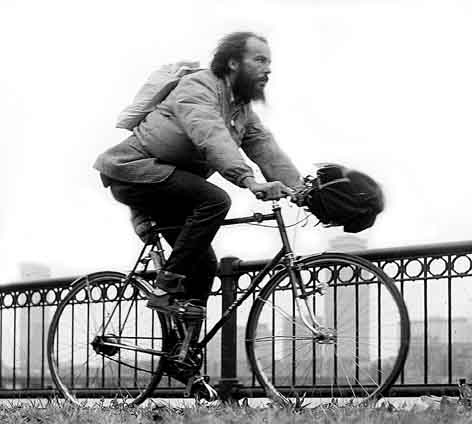


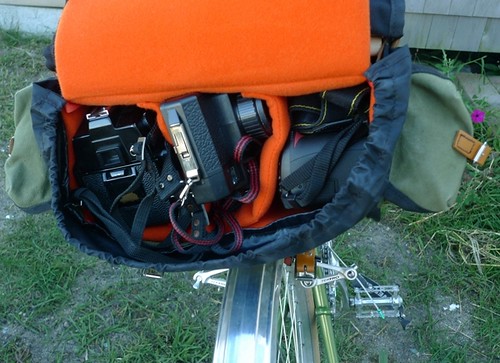
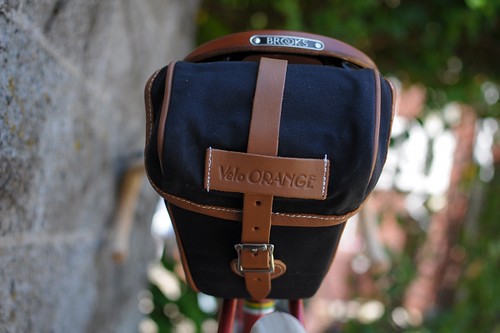
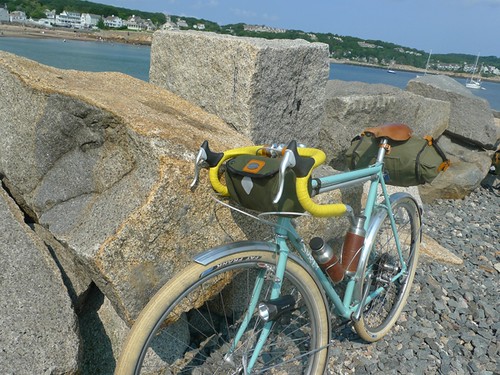
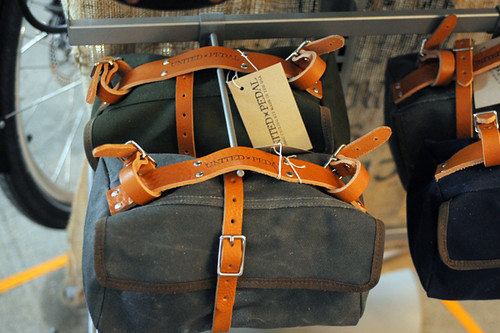
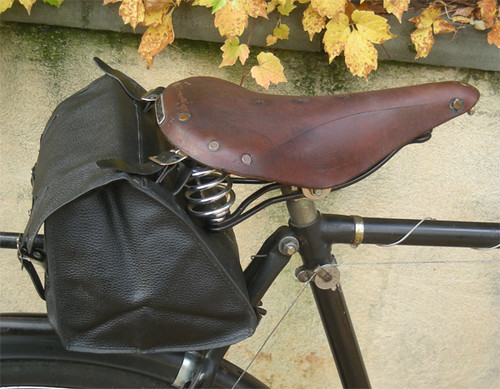



 On the campus of Saint Mary-of-the-Woods College near Terre Haute, Indiana
On the campus of Saint Mary-of-the-Woods College near Terre Haute, Indiana The entrance welcomed me and I knew that I was in a very special place. Thankfully, it also had a campground!
The entrance welcomed me and I knew that I was in a very special place. Thankfully, it also had a campground! The Stockett House and outbuildings.
The Stockett House and outbuildings. The First Baptist Church.
The First Baptist Church. Each building has a sign which provides a brief history.
Each building has a sign which provides a brief history. The prefabricated house of Colonel Allensworth, delivered by railroad and assembled in 1911.
The prefabricated house of Colonel Allensworth, delivered by railroad and assembled in 1911.











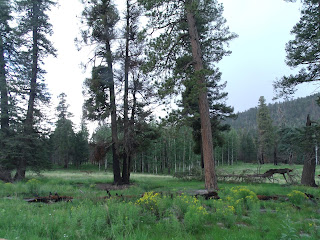














 Spending lots of time on the roadbike has improved my speed and endurance more than I ever thought possible. Unfortunately, my bike handling skills are lagging so far behind that the gap is becoming almost comical.
Spending lots of time on the roadbike has improved my speed and endurance more than I ever thought possible. Unfortunately, my bike handling skills are lagging so far behind that the gap is becoming almost comical. Being a "Mount Rainier VIP" (did you realize that volunteers are labeled "VIPs" because they are "Volunteers In Parks?") allowed me to recently take a private tour of the new Jackson Visitor Center and remodeled Paradise Inn.
Being a "Mount Rainier VIP" (did you realize that volunteers are labeled "VIPs" because they are "Volunteers In Parks?") allowed me to recently take a private tour of the new Jackson Visitor Center and remodeled Paradise Inn.  Exploring the bowels of a major construction site was a fascinating and educational experience. The first notable surprise was how many people were actually involved in the project, and the variety of different tasks they were all doing.
Exploring the bowels of a major construction site was a fascinating and educational experience. The first notable surprise was how many people were actually involved in the project, and the variety of different tasks they were all doing. Another interesting fact about the visitor center construction site is that it features a "Dance Floor." Not your Saturday Night Fever variety, but a giant platform -- nicknamed the Dance Floor -- that is suspended 24 feet in the air. Above that false floor is another 24 more feet of scaffolding that enables workers access to the fifty-foot high pitched ceilings.
Another interesting fact about the visitor center construction site is that it features a "Dance Floor." Not your Saturday Night Fever variety, but a giant platform -- nicknamed the Dance Floor -- that is suspended 24 feet in the air. Above that false floor is another 24 more feet of scaffolding that enables workers access to the fifty-foot high pitched ceilings. There are even more people working at the Paradise Inn-- 40-50, says Burr. The goal is to rehabilitate the 86-year old building so that it retains its rustic feel but can better withstand the ravages of time and weather.
There are even more people working at the Paradise Inn-- 40-50, says Burr. The goal is to rehabilitate the 86-year old building so that it retains its rustic feel but can better withstand the ravages of time and weather.  One such trench in the corner of the dining room was so big that Burr wondered if “they were gonna dig up some skeletons?” Seriously though, an NPS archaeologist did examine the area and thankfully, no skeletons were found (Remember... Redrum...).
One such trench in the corner of the dining room was so big that Burr wondered if “they were gonna dig up some skeletons?” Seriously though, an NPS archaeologist did examine the area and thankfully, no skeletons were found (Remember... Redrum...).